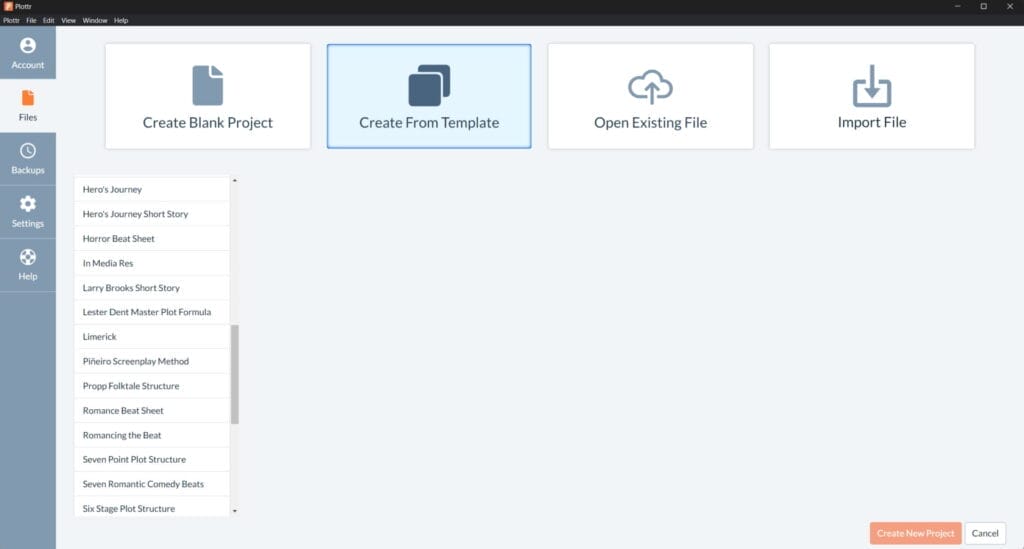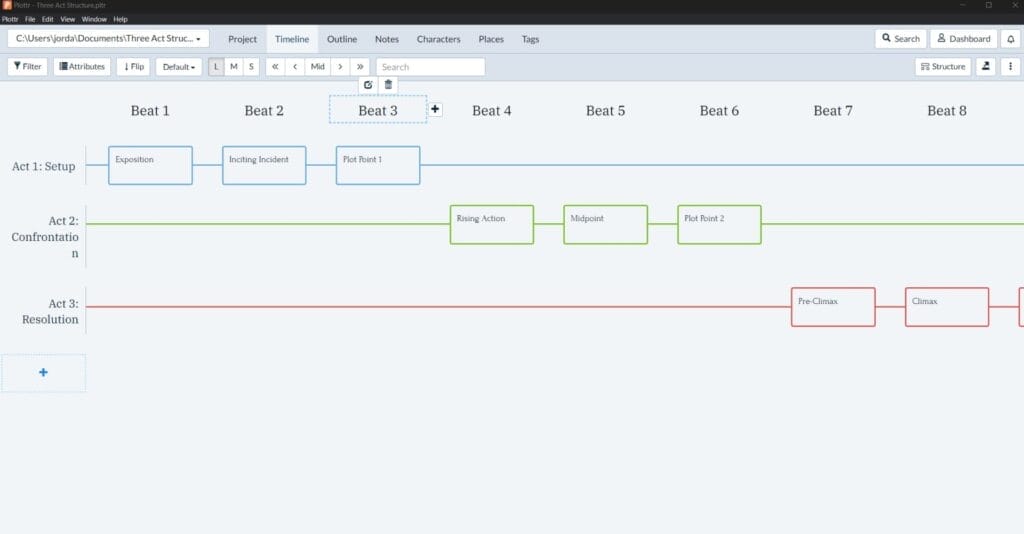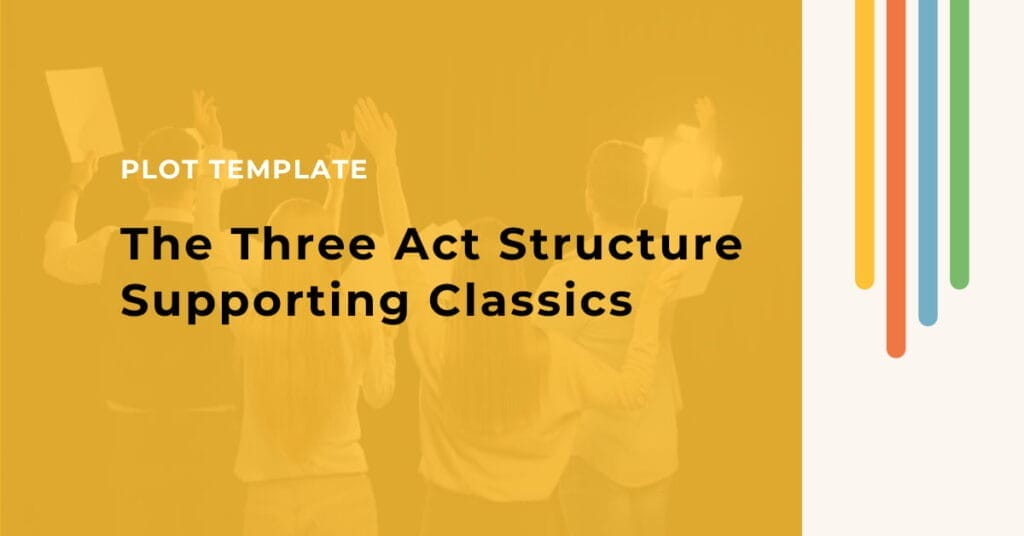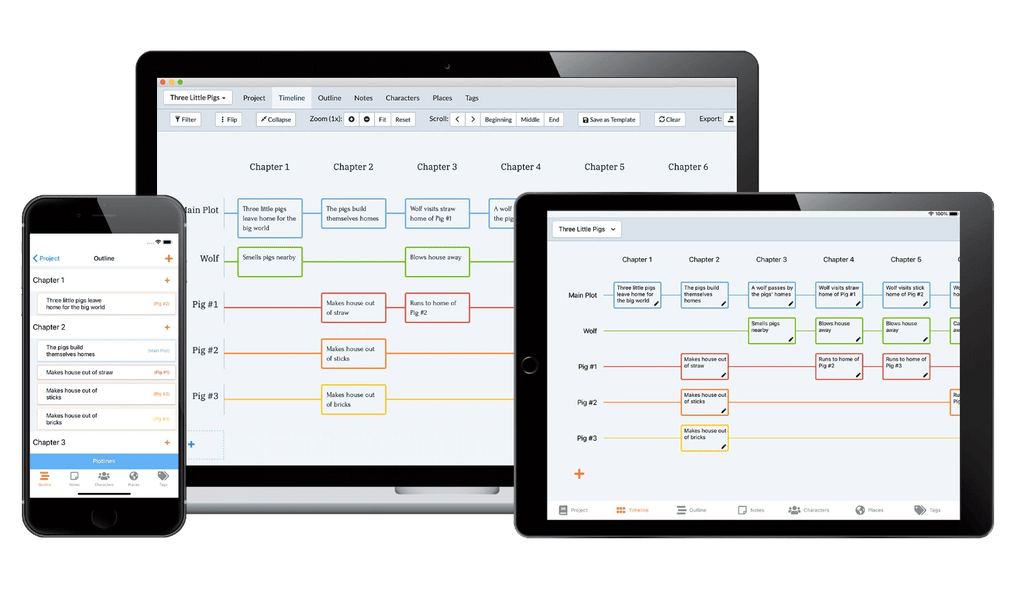A plot structure maligned by Aristotle and revived by modern screenwriters and novelists, the three act structure forms the backbone for many forms of modern storytelling. Whether you want to get Back to the Future or the urge to watch The Lion King is beckoning, the three act structure template in Plottr will help you craft better stories.
What is the Three Act Structure?
The three act structure, while often credited to Aristotle, fell out of favor for several centuries. It’s popularity was revived by none other than Syd Field in his 1979 book Screenplay: The Foundations of Screenwriting. (That’s the same Syd Field who is credited with the Syd Field Character Qualities character template in Plottr).
It’s a simple, foundational structure that screenwriters, novelists, and even short story writers have grown and adapted to fit several different genres and types of plots. It’s a simple to follow story formula that has stood the test of time.
Who is the Three Act Structure for?
Three act structure can be used in nearly any genre, and is often used in classic stories with a simple structure and a single major plotline. It’s often a good place for pantsers to start who may just be discovering the joys and advantages of plotting.
However, this story structure can also be used in the revision process to help you ensure you’ve hit all the necessary beats throughout your story. And if you are new to plotting, understanding the three act structure provides you a solid foundation when you begin to explore other templates and plotting methods.
Plot Points of the Three Act Structure
The three act structure is broken down into nine beats that vary slightly in length. They are broken into three parts, Act 1, the first 25% of the story, Act 2, the middle 50% of the plot, and Act 3, which contains the final 25% of the action.
Act 1
Exposition
The Exposition sets the scene for the rest of the story. It introduces the main character, their ordinary world, and let’s the reader know what is important to them.
This is also a good place to hint that something in their ordinary world is off, and that is causing some internal conflict.
For example, in The Lion King, we see the ordinary world for young Simba, but we also meet Scar, his uncle, and glimpse a hint of coming danger.
Inciting Incident
This is the event that drives the character out of their ordinary world and into the events of the story.
This is the moment when Scar tries to overthrow Mufasa and take the throne.
Plot Point 1
This is the event that forces the main character to take up the quest at hand and “cross the threshold” into the new world, even if they have been reluctant to do so up to this point.
Using our example, once Mufasa is dead, Scar convinces Simba that his father’s death is his fault, but that fact can remain a secret as long as Simba leaves and promises to never return to the Pride Land.
Act 2
Rising Action
As the protagonist enters this new world, they will face obstacles and roadblocks which can come in the form of trials and failures. With each of these, the stakes rise and tension increases.
Simba runs away, and after nearly dying in the desert finds himself in a new Hakuna Matata life, but he is still haunted by his past and can’t seem to completely forget about it. A young lioness from back home arrives and tries to convince him to return.
Midpoint
The midpoint re-establishes the main character’s goals and the central theme of the story. This is a large turning point for the main character, usually do to an event that changes their point of view.
When the young lioness, Nala, fails to convince Simba to return, Rafiki, the Shaman from the Pride Land finds Simba and shows him a vision of his father, who tells him he must return to take his rightful place on the throne.
Plot Point 2
This is often the point when the main character becomes proactive rather than reactive. They take action, moving toward their goal with new purpose and determination after their recent change of heart. They often meet obstacles on the way, but usually are able to overcome them.
Simba heads back home with his new friends, determined to take the throne, but when he arrives he finds the kingdom in ruins, the lions hungry and poor, and his mother abused by his uncle, Scar.
Act 3: Resolution
Pre-Climax
The main character has now reached the moment when they will confront the bad guy. But wait. What is that? The antagonist has a hidden strength or a trick up their sleeve, and things do not go as planned. All hope seems to be lost.
Simba confronts Scar finally, but Scar tells everyone Simba is responsible for his father’s death, and attempts to kill him. But as his life (literally) hangs in the balance, Scar confesses that he killed Mufasa.
Climax
This is the moment the reader has been waiting for. The hero, nearly defeated, takes everything they have learned throughout the story and the ways they have changed, and they use that new strength to confront the antagonist in one final battle.
Energized and angered by Scar’s confession, Simba fights back and using his signature move, pins Scar and forces him to confess. Scar tries to blame the hyenas, but Simba hands him over to them, and they kill him.
Denouement
What happens when the hero returns to the ordinary world? Is order restored? How have both the world and the main character changed because of the events of the story? This is the final resolution of the plot where all the loose ends are tied up.
Scar is defeated, the kingdom is restored, Simba and Nala are married, and they live happily ever after…well, sorta. Until Lion King 2 at least.
These nine relatively simple beats give you a framework to create almost any kind of story and tell it in a compelling way. But how do you use it?
How Do you Use the Three Act Structure in Plottr?
You can use the three act structure several ways. You can start by planning your story by following these beats, and then writing the events that happen between them.
Alternatively, you can use this plot structure as you write, checking in to make sure your story lines up and you’re hitting all of your story beats.
Finally, you can use the three act structure when you are revising your story to check your work and make sure you don’t have plot holes, extra scenes, or other common first draft errors before you do any revisions or self-editing.
You can find the three act structure in the templates when you are creating a brand new project, within the timeline section when adding a plotline, or in the project section when you are starting another book in the same series.
To use this template in Plottr as a starting point:
- Step 1: In the Files tab of the Dashboard, click Create from Template

- Step 2: Choose Three Act Structure from the list on the left, then Create New Project
- Step 3: Fill in the scene cards on the three individual plotlines representing each act

- Step 4: Add characters’ arcs or further subplots – whatever you need to flesh out your story
This plot template works well in tandem with simplified character arc templates such as goal, motivation, conflict.
Ready to Apply the Rule of Three?
Can you see how the three act structure might work for you in your fiction? Let us know your thoughts in the comments below.
If you’re not a Plottr user yet, get started with a free trial today. And if you’re already a subscriber, join us for free Plottr tutorials every Tuesday!








Comments